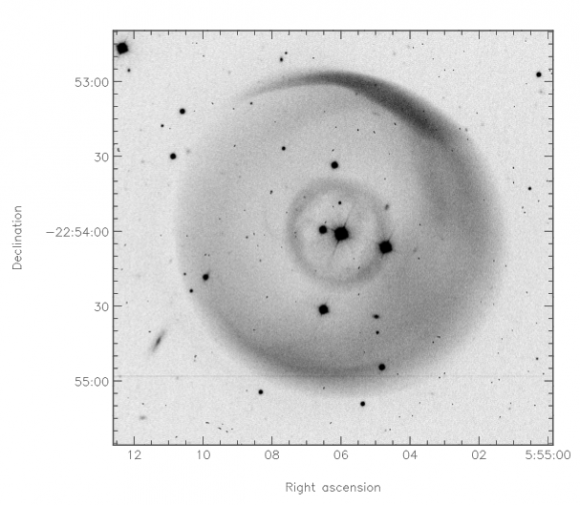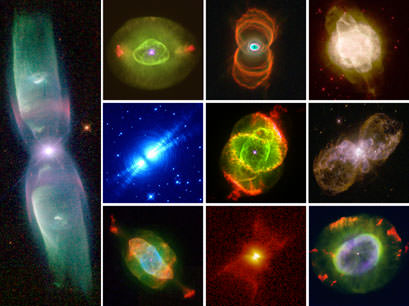From the Cat’s Eye to the Eskimo, planetary nebulae are arguably among the most dazzling objects in the Universe. These misnamed stellar remnants are created when the outer layers of a dying star blows off and expands into space. However, they can look radically different from one another, revealing complicated histories and structures.
But recently, astronomers have argued that some of the most exotic shapes are the result of not one, but two stars at the center. It is the interaction between the progenitor star and a binary companion that shapes the resulting planetary nebula.
The archetypal planetary nebula is spherical. Most planetary nebulae, however, have been shown to be non-spherical, complex structures.
“LoTr 1 is one such planetary nebula, but with a twist,” Amy Tyndall – a graduate student at the University of Manchester and lead author on the study – told Universe Today. It has not one star at its center but two. The binary central star system consists of a faint, hot white dwarf and a cool companion – a rapidly rotating giant.

LoTr 1 was first discovered by astronomers using the 1.2 meter telescope at the Royal Observatory in Edinburgh, Scotland. At the time it seemed that LoTr 1 was similar to a particular group of 4 planetary nebulae (Abell 35, Abell 70, WeBo 1 and LoTr 5), all of which had a central binary star system.
Another common factor amongst this particular group is that in most cases the companion star seemed to be a barium star – a cool giant that shows relatively large amounts of barium. Before the planetary nebula forms, the progenitor star dredges up an excess amount of Barium on its surface. It then releases a Barium-enriched stellar wind, which falls on its companion star.
“After the stellar envelope is ejected to form the surrounding nebula, the giant star evolves into a white dwarf, while the contaminated star retains the barium from the wind as it continues to evolve to form a Barium star,” explains Tyndall.
Tyndall and her collaborates set out to see if the companion star within LoTr 1 was in fact a Barium star. They acquired data from telescopes in both Chile and Australia and compared their results to the two other elusive planetary nebulae in the group: Abell 70 and WeBo 1.
“If barium is indeed present, it would be a good step further towards our understanding of how mass is transferred between stars in a binary system, and how that subsequently affects the formation and morphology of planetary nebulae,” says Tyndall.
While the results show that LoTr 1 does consist of binary star system, the companion star is not a Barium star. But a null result is still a result. “LoTr 1 remains an interesting object to us as it shows that we still have huge gaps in our knowledge as to how these stunning objects form,” Tyndall told Universe Today.
Without the presence of Barium, it would appear at first that little mass was transferred to the companion star. However, the companion star is rotating rapidly, which is a direct consequence of mass transfer. The most plausible explanation is that the mass was transferred before the barium could be dredged up to the stellar surface.
If the stellar evolution was cut short this way then there will be detectable evidence in the properties of the white dwarf. The next step will be to take another look at this odd planetary nebula in hopes of better understanding the complexities of this system.
The paper has been accepted for publication in the Monthly Notices of the Royal Astronomical Society and is available for download here.

